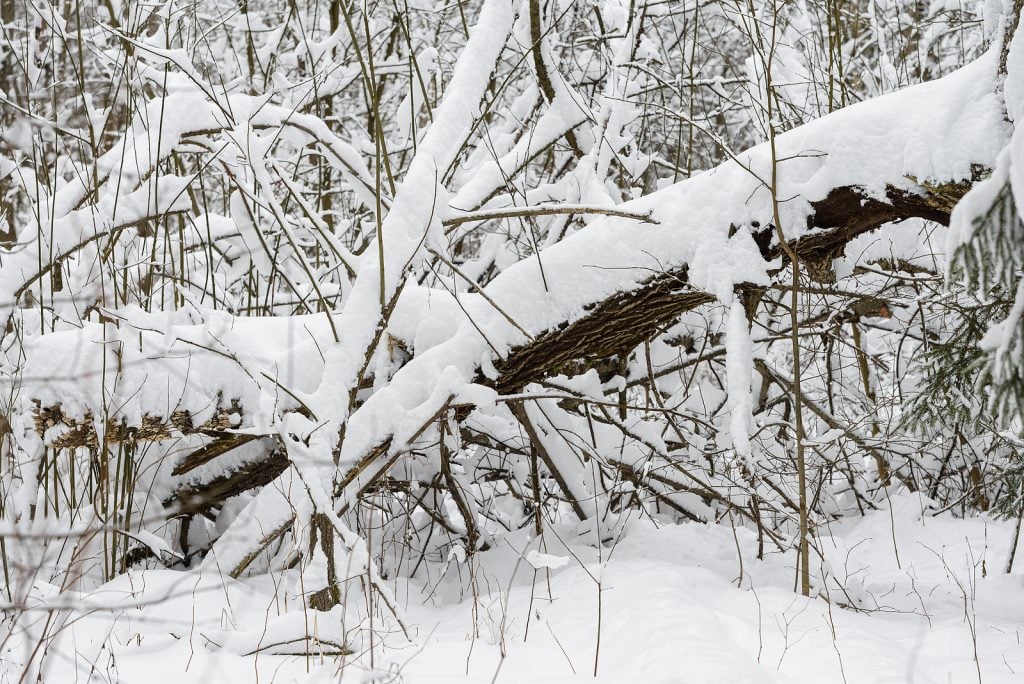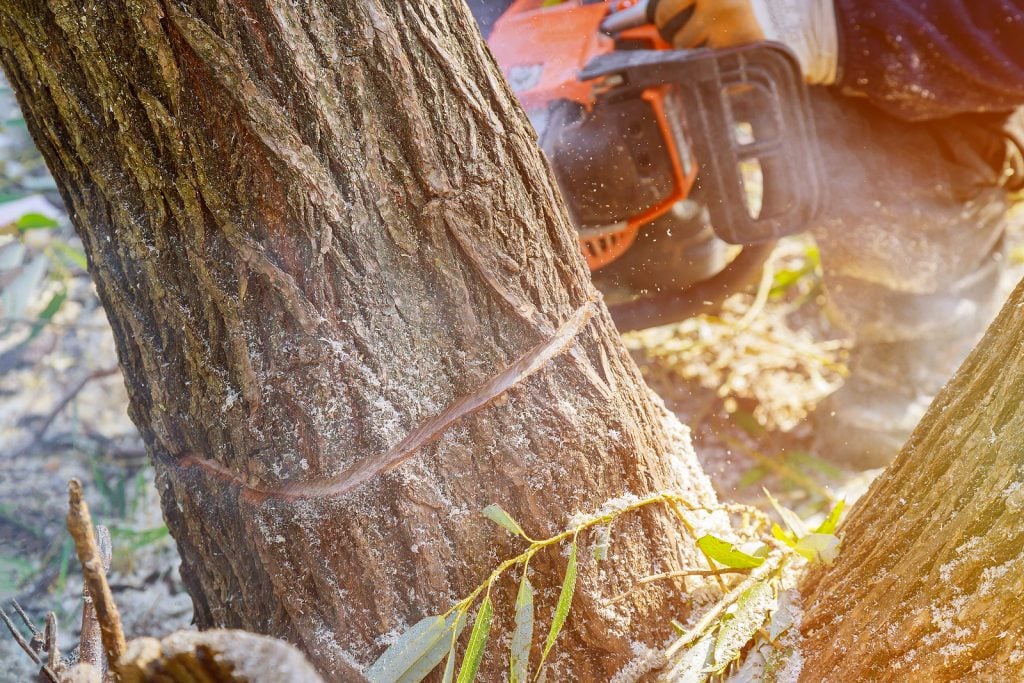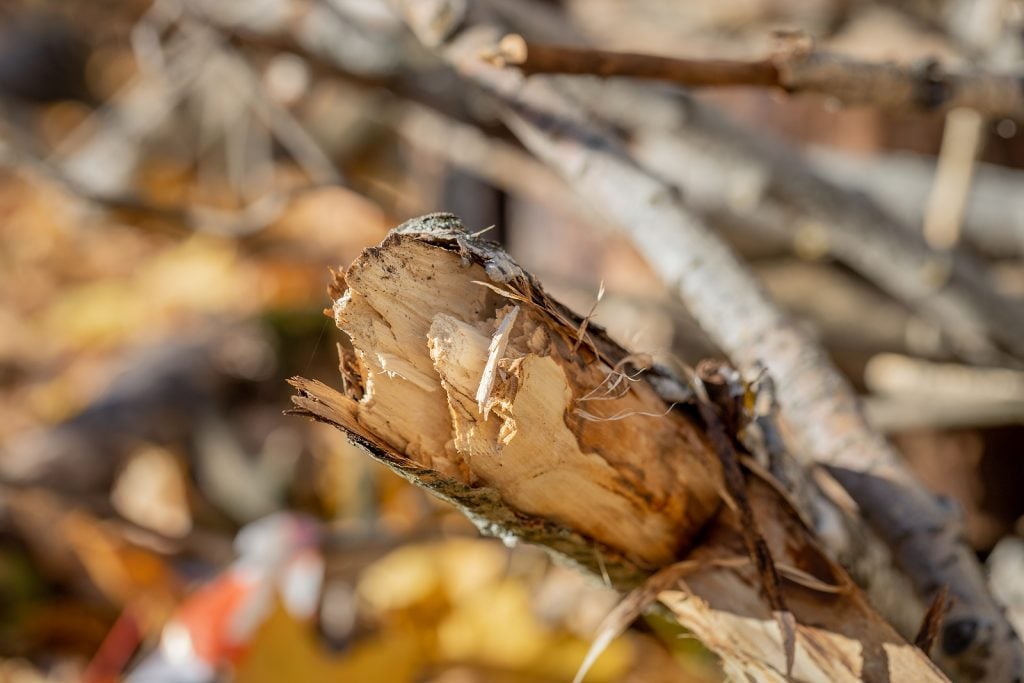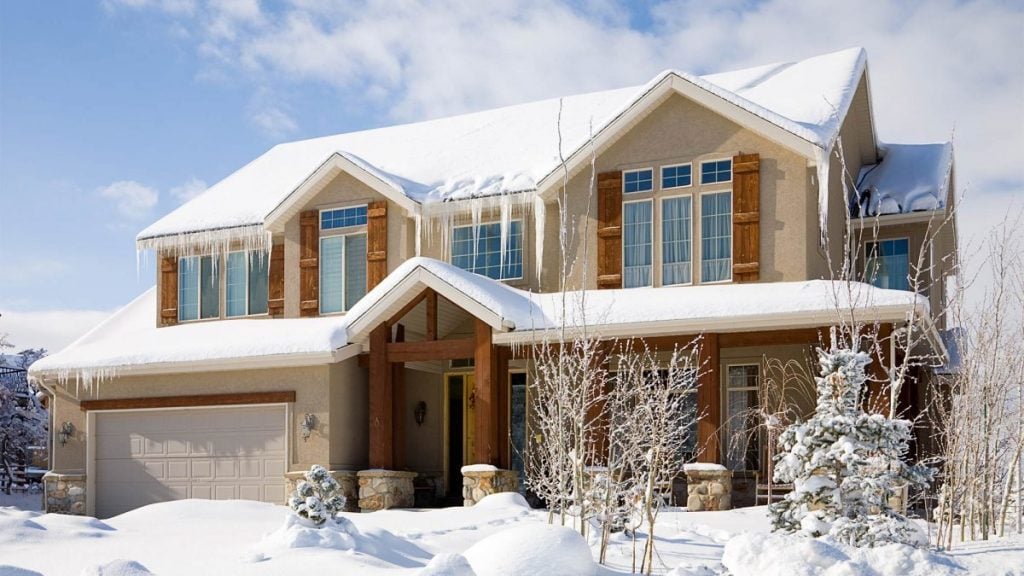Investing your time, money, energy, and—yes—emotions into your landscaping means that when something gets damaged or dies off, it can feel like a little (or big) piece of your heart has broken along with it. And is there anything worse than realizing that the same beautiful blanket of white that has covered your lawn with sparkling wonder is the same beast that took down a massive branch from your favorite tree? It probably doesn’t feel like it.
So now what? Can you fix a broken branch? Is there any way for the tree (or you) to recover from such a tragedy? How can you prevent this from happening in the future?
How To Repair Tree Damage In Winter
Because your heart feels as heavy as your snow-laden limbs, you may want to rush out and take some rash action. Whether that instinct takes the form of resuscitation attempts or an immediate branch-ectomoy, our advice is to slow down, breathe a minute, and take these important steps to fix a broken branch in winter.
How To Fix A Broken Branch: Assess The Situation
Once you’ve completed your breathing exercises, it’s time to assess the situation. You don’t want to remove a tree or even a branch that could have been saved because you were hurrying the decision. Here are a few things to look for and ask yourself when assessing how to, or whether or not you even can, fix a broken branch.

- Does the broken limb or trunk pose immediate threat to safety, life, or other valuable property?
- Does at least 50% of the tree still look great, including the main leader branch?
- Aside from the snow or storm damage, is the tree normally healthy and robust? (Keep in mind that a younger tree may have more resilience and therefore bounce back from winter tree damage faster than an older tree.)
- Are there wounds on the tree from ice damage or another falling tree small enough that they could potentially heal in the next few years? (Think 1:10 or smaller in terms of wound size to branch ratio.)
- Is the damage enough along with other negative factors (like messy dropping fruit or a too-tall species growing beneath a power line) to make you want to lose the tree altogether?
Based on these points, it’s time to come to a preliminary decision. If the damning evidence is very clear, it’s okay to move forward with safe tree removal. If, however, you believe the tree can be saved—which is the case with most winter tree damage—it’s time to safely begin to fix your broken branch.
How To Fix A Broken Branch: Be Safety Conscious

Many times, damaged tree branches are under a lot of strain with plenty of built-up momentum ready to release at the first sign of cutting. So, be careful. Even when just taking a look, it’s important to take a good look around, from a distance, at what is really going on. Are there large branches, power lines, or any other objects that may fall on you or otherwise cause harm? If so, stay back until professional help arrives. One of our top winter tips for landscaping is to know your limits. It’s a good idea to get a professional landscaper’s assistance if your broken tree branch is over 6 inches in diameter.
If you are capable of handling minor winter tree damage yourself, make sure you’re well equipped with proper how-to-fix-a-broken-branch knowledge and sharp tools to get the job done safely and well.
How To Fix A Broken Branch: Apply First Aid
For simple limb “repairs” you should be able to easily remove the broken branch at or near where it joins a larger, healthier branch. Again, make sure you have proper equipment that is clean and sharp to prevent doing more damage through the spread of disease or by exposing more of the tree’s cambium than necessary.

If your broken limb has actually torn away from the tree exposing the inner portion of the tree, carefully remove the branch and then use a sharp chisel or knife to cut away the ragged portion of the bark, leaving a clean wound that can heal much nicer and faster.
Doing these things are a good start to fixing a broken branch, but oftentimes you’ll need to wait until spring to assess the tree again. Once it has come out of dormancy, you’ll be able to see what is alive and growing and what may still need to be pruned away to give your tree the best chance of thriving for years to come.
How To Fix A Broken Branch: Let It Go
Sometimes, as much as we hate to, we just have to let a damaged tree go. If the tree is putting other valuable property at risk, too much damage has been done, or such a large leader has been broken off that the tree will no longer hold any appeal (shade capacity, visual effect, etc.) in your otherwise beautiful landscaping, It’s time to part with the tree. At this stage, it’s smart to contact professional landscaping services to help remove the tree in a safe and effective way that can help prepare your yard for new life when you’re ready to plant again.
5 Things To Do For Your Trees & Shrubs Before Winter
There is the occasional winter tree damage that just can’t be avoided—mother nature is going to do her thing no matter what! But there are a few tasks you can put on your Winter Prep list that can help prevent unnecessary damage to trees and larger shrubs in your landscaping and save you a load of heartache.

- Don’t prune. Pruning in the fall can stimulate new growth that won’t have time to mature and strengthen before the snow flies, making it susceptible to frost damage or breakage.
- Prune. Yeah, we know what we said. But here we’re just talking about the stuff you can already tell is damaged, weak, or dead before winter comes. This way, you can take care of it before it’s icy, covered in snow, and risking more damage to your property.
- Water. Yep, even in the winter, some trees are still going to be asking for water—particularly evergreens which don’t go dormant in the winter. On the warmest day you can, make sure you get your trees some water to avoid desiccation which can lead to weakness and breakage.
- Don’t get salty. Preventing icy walkways in the winter is important, but make sure that you’re not piling salt-heavy snow near your trees which can cause salt burn causing dry, brittle plant life more at risk for breaking.
- Shake it off. Every so often, if you see your limbs getting weighed down a bit, take a broom and safely help the tree free itself of its snowy burden. If done often, this can help prevent heavy buildup and reduce the chance of a limb breaking.
Common Questions About Trees & Shrubs In The Winter
We’ve gone rounds now on winter tree damage and how to handle it, but there are a few more commonly asked questions we don’t want to skip over. Here is a roundup of more cold-weather yard questions and some of our best winter tips for landscaping done right!
If my branch breaks and I don’t fix it right away, will my tree die?
As noted above, it’s probably a good thing to give it a minute before diving into decision-making and rash action if a heavy load of snow breaks one of your tree branches. You will want to try and do a little triage—making clean cuts for better healing—and then possibly wrap the area in some burlap for additional insulation against icy winds and more snowfall. Will your tree die because you take your time? Not likely. If it was going to die, it is likely because there was too much damage done to save it anyway. Take a deep breath and repeat after me: This is not my fault!
Can I prune a frozen, damaged tree?
The short answer is yes, you can prune a frozen, damaged tree. But that doesn’t always mean you should. As we talked about before, it is sometimes best to wait until spring so you can be sure what parts of your tree are still salvageable, but if you are certain that irreparable damage is there or you plan to remove the tree altogether, it is okay to remove the offending parts of the tree. You do not, however, want to prune back healthy parts of the tree lest you encourage it to put energy into new growth, putting it at risk for death all over again.
What can happen if you prune in winter?
The answer above will get us started on what can happen if you prune in the winter. Most trees go dormant in the winter, meaning their energy is spent carefully preserving nutrients that are harder to come by with less light, water, and fertilizer to rely on. Tricking a tree into thinking it’s time to start on spring growth or even accidentally pruning back more than is necessary from a broken branch can make it even more susceptible to greater winter tree damage.
Will a tree or shrub recover from frost damage?
Most healthy trees and shrubs can recover from frost damage with little to no lasting effect. Often the damage is more aesthetic than anything, and even if the tree or shrub is stunted for a small part of the season, future years should show continued healthy growth. If a tree or shrub is especially young or sick when struck by the frost damage, it can certainly be more difficult to shake off. Planting at appropriate times and taking precaution to wrap young plants can help ward off some winter damage to your shrubs and trees.
Can I prevent winter damage to my trees and shrubs?
Winter tree and shrub damage can be largely avoided with appropriate care throughout the year. Pruning, fertilizing, and mulching at the right times for each plant is key to ensuring robust health going into the cold winter months. And, as winter approaches, make sure you’re ready with a good watering schedule if needed, some tree and shrub wrap, and a watchful eye to help relieve branches of snow and roots and trunk of salty ice.
Can I water my trees and shrubs with snow on the ground?
Water is an important part of tree health, particularly during the winter. Tree cells are better able to retain nutrients and remain robust when full of water. Similarly, water in the soil helps ensure a warm environment for healthy roots to thrive. That said, watering when snow and ice are present isn’t the best time. Wait for temperatures to go above 40℉ and water early in the day so the moisture can get nice and deep before the thermometer numbers drop again in the evening.
Should you water trees after a freeze?
We think a similar answer to the question above applies here. A hard freeze means there is little water in the soil to help insulate root systems and your trees will probably be wanting a good soaking at some point. But the ground will need to be permeable enough for long enough to make a watering effective. Keep an eye on your weather app and be ready when the time is right!
If you want beautiful landscaping all year long, make sure to follow these tips! And it doesn’t hurt to keep up with professionals who are continually expanding their knowledge base and sharpening their skills.
Big Rock Landscaping: Your Winter Landscaping Experts
When people think of landscaping, it’s usually in a summery, garden kind of way. But at Big Rock Landscaping, we’re ready for all things landscaping, all year long. That includes winter and all the beauty—and broken limbs—that go along with it. Give us a call to find out how we can help you plan, design, install, and maintain the landscaping of your dreams!

